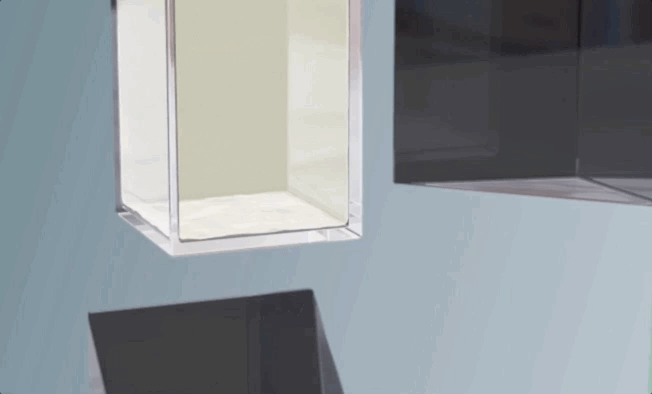
Holograms and algae became 3D prints, water bottles became filament, we printed off-the-grid IoT devices and bio-computers, and hearing got a new helper — all this week in 3D printing.
If Star Trek is going to be real, it’s going to start here
I can’t even believe I’m writing this, but here goes: A group of researchers has been able to create 3D prints that cure almost instantaneously in the crosshairs of beams of light. Through this holographic patterning of light fields, resins harden in three dimensions simultaneously, dramatically reducing some of 3D printing’s biggest limitations. Learn more at TechCrunch, and real the whole paper, One-step volumetric additive manufacturing of complex polymer structures, here.

Holoprinting at work
In another leap toward a more Federation-like future, a pair of Dutch designers has successfully turned algae into a bioplastic 3D printing filament suitable for many plastic applications. The algae polymer may end up “eventually entirely replacing plastics made from fossil fuels like oil,” through a series of local 3D Bakeries — if designers Eric Klarenbeek and Maartje Dros get their way. You can read more about this ultra-sustainable future at Dezeen, as part of their excellent Good Design for a Bad World series.
- From algae…
- …to vases. (Images: Antoine Raab)
And to complete our transition into a more sustainable world, we’re getting a hand from that most maligned of planet-polluting plastic objects, the plastic water bottle. Forbes has the story of Bottletop, a boutique in London that will have an entirely 3D printed interior, primarily made from Reflow, a filament composed of plastic waste. The flooring? Recycled tires. The finishing touch? 60,000 upcycled plastic bottles. Until all of our plastics are made from algae, here’s hoping Reflow will help us reuse more of that 300 million tons of plastic produced each year….
Practical Magic
OK, holographic 3D printing may be the highest-tech 3D world news in the past week, but technical breakthroughs don’t have to come from such sci-fi, futuristic places. The other big story of the week came from the University of Washington, where researchers were able to create 3D printed, Wi-Fi connected devices that are totally wireless — in other words, non-electronic electronics. Using 3D printed springs, gears, and switches that connect to embedded antennae, the objects reflect ambient Wi-Fi signals. Read the full story at Engadget, and if you get inspired to create your own elaborate, Wi-Fi connected Rube Goldberg devices, please send gifs.
But, what if electricity-free “electronics” weren’t just for Wi-Fi? In other astounding news this week, researchers at MIT have successfully printed bacterial bio-ink-based living computers. By combining lines of printed bacteria with different chemicals, the scientists were able to created interacting networks that could one day be the basis of tech that delivers medicine via ingestible living robots. Quartz has a nice rundown, and you can watch the full story (and feel pretty smart in the process), below.
Now Hear This
Hearing aids have made big advances in recent years, but a totally new road to hearing restoration is now opening up, thanks to 3D printing. As Digital Trends reported, new 3D printed bones will replace the tiny, delicate middle-ear bones that can become damaged, leading to hearing loss. Researcher from Baltimore’s University of Maryland School of Medicine still have a ways to go before this technique is ready for use, but early indications are promising. So far, this makes sternums, tibias, jaws, noses, skulls, and ears that we can or will be able to mend with 3D printing in the near future. Let’s hope that, by the time we all reach our golden years, we’ve perfected replication of every single organ. Music to our ears.
Interested in 3D printing your medical needs? We can help.
Cover image via the Advanced Science News YouTube channel.




